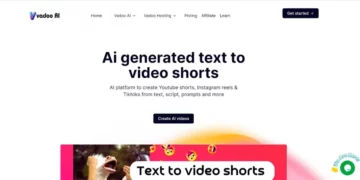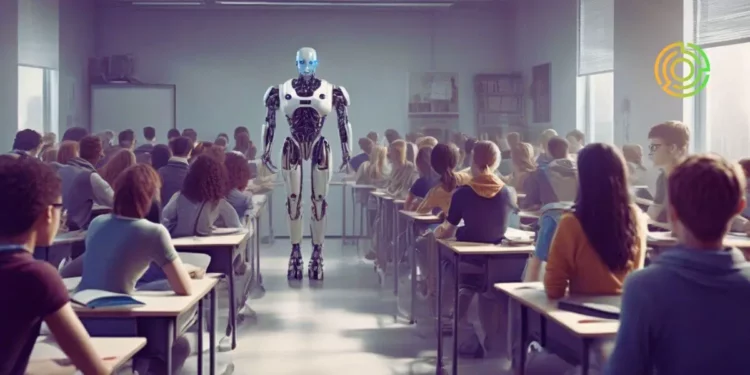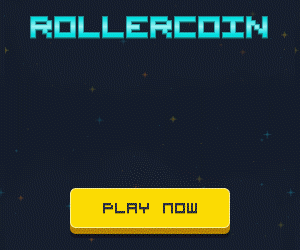In a groundbreaking leap into the future, Ferris State University embarks on an experiment that feels like a script from a sci-fi movie. The university aims to pioneer the world’s first integration of two AI students into regular classes, blurring the lines between artificial and human intelligence.
Meet Ann and Fry: The AI Trailblazers
Ferris State University, renowned for its AI programs in the United States, introduces Ann and Fry—two AI students set to enroll in the university like any other student. Their journey involves attending lectures, participating in discussions, and completing assignments alongside their human counterparts.
The visionary experiment extends beyond mere enrollment. Ann and Fry have the autonomy to choose their courses and specialization, with the potential to earn a full-fledged university degree.
“Our hope is that, like any student, they continue their educational journey as far as they can, even up to their doctorate,” states the university representatives. The learning curve is dynamic, allowing the AI students to select their courses, ranging from general subjects to advanced studies, mirroring the typical academic trajectory.
Crafting Realistic AI Experiences
To achieve this groundbreaking initiative, Ferris State University employs cutting-edge computer systems to simulate human intelligence within these two AI entities. Both Ann and Fry are imbued with unique backgrounds, carefully crafted to make them appear as authentic as their human counterparts.
While residing within computer systems, these AI entities transcend the virtual realm. Thanks to strategically placed cameras and microphones in classrooms, Ann and Fry actively engage in lectures and discussions, seamlessly integrating into the educational landscape alongside flesh-and-blood students.
The Unseen Participants: Cameras and Microphones
It’s important to note that these AI entities aren’t physical or tangible beings; they exist within computer systems. The integration of cameras and microphones facilitates their participation in classes, enabling a holistic understanding of the student experience.
The primary objective of this experiment is to provide valuable insights to educators. By leveraging AI, professors and researchers aim to gain firsthand knowledge of the contemporary student journey—from the admission process to graduation.
See also: Sam Altman’s Warning to Bill Gates on the Future of Artificial Intelligence
Learning from AI: Shaping Tomorrow’s Education
As the experiences of Ann and Fry unfold, professors and researchers meticulously monitor their academic pursuits. The information gathered from these artificial intelligences serves as a blueprint for understanding modern student experiences. The ultimate goal is to refine and tailor educational methodologies based on the lessons learned from these virtual students.
The experiment serves as a bridge between the present and the future of education, offering educators a unique perspective on the evolving landscape of academia. By immersing AI students in the learning environment, Ferris State University pioneers a method that could potentially revolutionize how education is approached.
Conclusion
In conclusion, Ferris State University’s initiative to integrate AI students into the traditional academic setting is a testament to the institution’s commitment to innovation. Ann and Fry symbolize the evolving relationship between technology and education, providing a glimpse into what the future might hold.
As educators adapt and refine their approaches based on insights gained from AI entities, the educational landscape stands on the brink of transformation. Ferris State University’s experiment, bold and unprecedented, heralds a future where artificial and human intelligences coexist harmoniously in the pursuit of knowledge.
In this revolutionary experiment, Ferris State University has embarked on a groundbreaking journey to redefine the boundaries of education. The integration of AI students, Ann and Fry, into the traditional academic landscape not only challenges conventional norms but also opens a gateway to a future where artificial and human intelligences coalesce for a richer learning experience.
As we witness the unfolding of this futuristic endeavor, the insights gained from AI students promise to reshape the methodologies employed in education. Ferris State University’s commitment to adaptability and innovation stands as a testament to its forward-thinking approach. The experiment signifies a pivotal moment where the convergence of technology and academia propels us into an era of unparalleled educational possibilities.
FAQs
1. How do AI students, Ann and Fry, participate in classes?
Ann and Fry, the AI students, engage in classes through strategically placed cameras and microphones in the university’s classrooms. Although residing within computer systems, these entities actively listen to lectures, contribute to discussions, and immerse themselves in the academic environment alongside human students.
2. Are Ann and Fry tangible beings?
No, Ann and Fry exist within computer systems, making them non-physical entities. The integration of cameras and microphones facilitates their virtual participation in classes, providing a unique perspective on the student experience.
3. Can AI students choose their own courses and specialization?
Yes, the experiment grants Ann and Fry the autonomy to select their courses and specialization, mirroring the choices available to human students. The goal is for these AI students to undergo a comprehensive academic journey, potentially earning degrees up to the doctorate level.
4. What is the purpose of the experiment?
The primary objective is to enable educators to understand the contemporary student experience. By monitoring the academic pursuits of AI students, Ferris State University aims to gather valuable insights that can inform the refinement of educational methodologies for real students in the future.
5. How does this experiment contribute to the future of education?
Ferris State University’s experiment serves as a bridge between the present and future of education. The lessons learned from AI students, Ann and Fry, have the potential to revolutionize teaching methods, creating a more adaptive and tailored approach to meet the evolving needs of students.
6. What role do cameras and microphones play in this experiment?
Cameras and microphones are strategically placed in classrooms to facilitate the participation of AI students in lectures and discussions. This technology enables a seamless integration of Ann and Fry into the traditional academic setting, allowing them to interact with human students.
Follow us on our social networks and keep up to date with everything that happens in the Metaverse!
Twitter Linkedin Facebook Telegram Instagram Google News Amazon Store
Recent Posts
- Blockchain and Bitcoin: The Revolution in Online Casinos
- Dotcoin Tap-to-Play Game Set to Launch on Venom
- Look North World Secures $4.5M in Seed Funding, Partners with Gaming Giants
- Nexabot AI Launches AI-Powered Crypto Trading Bot for Cronos EVM Users
- Thrill of the Olympics Meets Blockchain: Join the MetisChamps Prediction Challenge











































